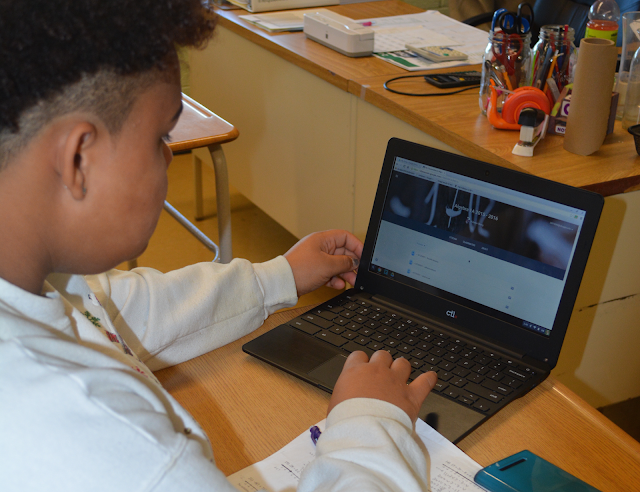If students in Michigan want to learn about life on a farm in New York or a city in Australia, they don’t need to buy a plane ticket or even leave the classroom. Educators in Michigan are bringing global experiences to the classroom using cloud technology, such as Google Apps for Education and Chromebooks. Inspired by how Michigan schools are transforming classroom experiences with technology, we’re highlighting a few success stories in the region.
Turning moments of curiosity into learning opportunities
At Grand Haven Area Public Schools, Google Apps for Education put student learning, collaboration and feedback at the center of the classroom. Grand Haven has launched 4,500 Chromebooks for students and staff and has deployed 8,400 Google Apps accounts. Before introducing the new tools, when students had a question, they had to wait until a teacher had time to work with them. In classrooms of 20 students or more, many of these teachable moments would simply get lost in the shuffle.
Technology allows those moments of curiosity to turn into learning opportunities for students. With Chromebooks and Google Apps for Education, teachers are able to provide feedback on assignments to each student individually in a single class period. For example, at Grand Haven, students use Google Docs to share their progress on math assignments with their teachers. Math teachers then check-in virtually with each of the students as they’re working on the assignment to provide them with real-time feedback by adding comments in the Doc. The teachers also use Doc’s revision history feature to see the logic students are using to solve the problem, giving them better insight into how students are progressing.
One high school teacher said she was able to give real-time feedback on an assignment to every single student — during a one hour class period — for the first time in fifteen years of teaching. “It’s much more than just handing a student a device,” says Doug Start, instructional technology coordinator at Grand Haven Area Public Schools: “Google Apps for Education lets our teachers move from being the ‘sage on the stage’ to the ’guide on the side,’ as they now have time to work more directly with students.”
Traveling the world from inside the classroom
Lincoln Park Public School District (case study) considers technology a key part of its mission to prepare and inspire students to achieve educational excellence. Many of the district’s students don’t have access to technology at home, and others struggle with state standardized test questions that are based on the assumption that students have traveled.
To overcome this challenge, the district launched Google Apps for Education for 4,900 students and introduced 4,400 Chromebooks. Students now have unlimited access to global information online. “We now have the ability to bring virtual knowledge into the classroom. The virtual experience opens up the world for our students and allows them to learn more,” says Cheryl Irving, assistant superintendent for Lincoln Park Public School District.
Collaborating with virtual learning
To provide students with anytime, anywhere learning, Fenton Area Public Schools launched 1,300 Chromebooks and 4,600 Google Apps for Education accounts for students. “Our Google solutions and services are creating new learning spaces that are spontaneous and less constrained,” says Kevin Powers, technology director at Fenton Area Public Schools.
Teachers are providing students with opportunities to work, learn and collaborate anytime, anywhere using technology beyond the classroom walls. For example, they created live after school study groups via Google Hangouts and Docs, as well as virtual book clubs during the summer via Google Groups. The district also used Hangouts to host a CNN Hero of the Year nominee, who spoke to three elementary classrooms at once.
For students and teachers in Michigan, the classroom is now bigger and richer. With Google for Education tools, students and teachers have global opportunities in the classroom and beyond.

